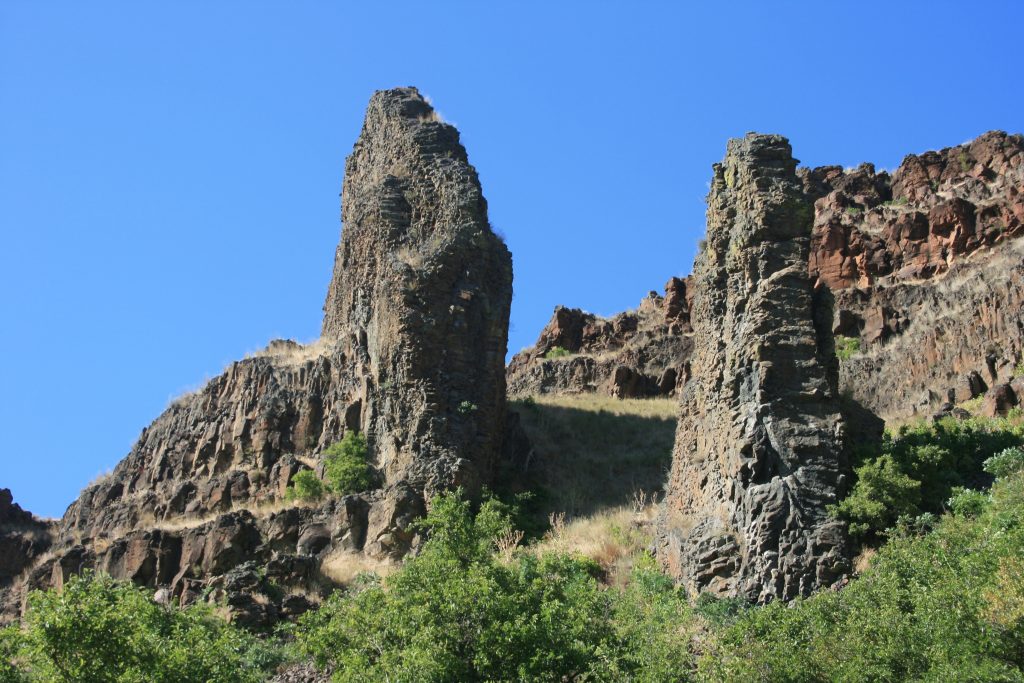26 April 2019–About 16.7 million years ago, the Columbia River flood basalt event covered much of eastern Oregon, parts of western Idaho and southern Washington state. The massive outpouring of basalt lava, covering about 63,000 square miles of the Pacific Northwest, is thought to have originated from the Yellowstone volcanic hot spot as the North American tectonic plate rode over the hot spot.
At the SSA 2019 Annual Meeting, researchers are looking at the interaction between the hotspot and parts of the lithosphere (the Earth’s crust and upper mantle) that have interacted with it over millions of years, to learn more about how the Columbia River flood basalts grew and moved over time in a south to north direction. Christian Stanciu, a researcher at the University of Oregon, will present seismic data from the region that provides a clearer picture of the upper mantle underlying the basalts.
“The Pacific Northwest lithosphere was heavily modified by multiple tectonic and magmatic events. In order to understand what happened, we need to understand the mantle processes that drove these events. In particular, we image pieces of ocean lithosphere that have come off the base of North America, to which we attribute the Columbia River flood basalts’ migration,” Stanciu said.

As seismic waves move through the earth, changes in their velocity can indicate the presence of “cooler” and “hotter” spots, where lower velocity spots may indicate the presence of magma plumes or areas of melt, and higher velocity spots can indicate pieces of unmelted lithosphere. The high-resolution models of the upper mantle produced by Stanciu and colleagues now show that two high-velocity spots in the region, called the Wallowa and the Siletzia anomalies, are separate from the crust down and represent two distinct structures.
In the context of the Pacific Northwest’s complicated tectonic history, where oceanic plates have been subducting under the North American plate for millions of years, the researchers think that Siletzia anomaly in Idaho may be part of the subducted Kula plate, and the Wallowa anomaly in Oregon may represent a piece of the subducted Farallon plate. “The Kula-Farallon spreading center was overridden by North America, and we capture pieces of each plate in our models,” said Stanciu.
The new results “reinforce the idea of northward migration of part of the Yellowstone plume from the Nevada border toward northeast Oregon,” Stanciu said. He explained that Farallon plate beneath eastern Oregon might have peeled away and sank further into the mantle, rolling back after the arrival of the Yellowstone plume. The delamination process could have paved the way for the migration of the Columbia River flood basalts.
